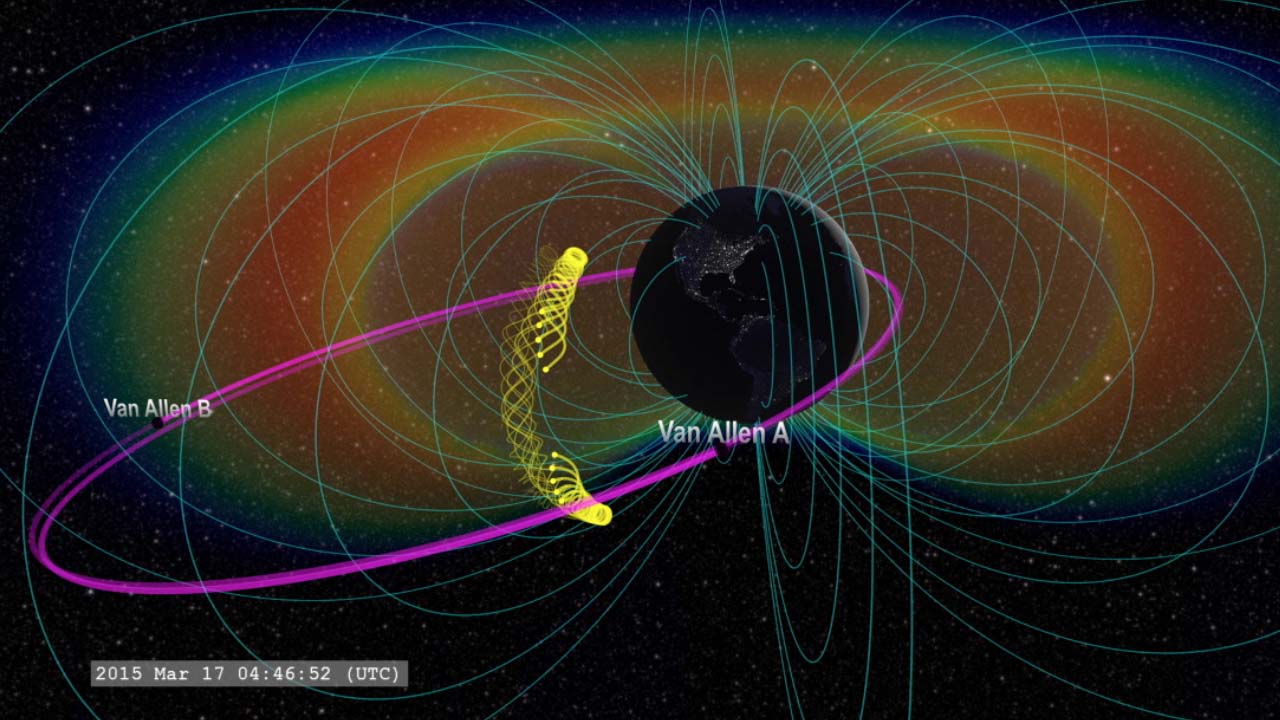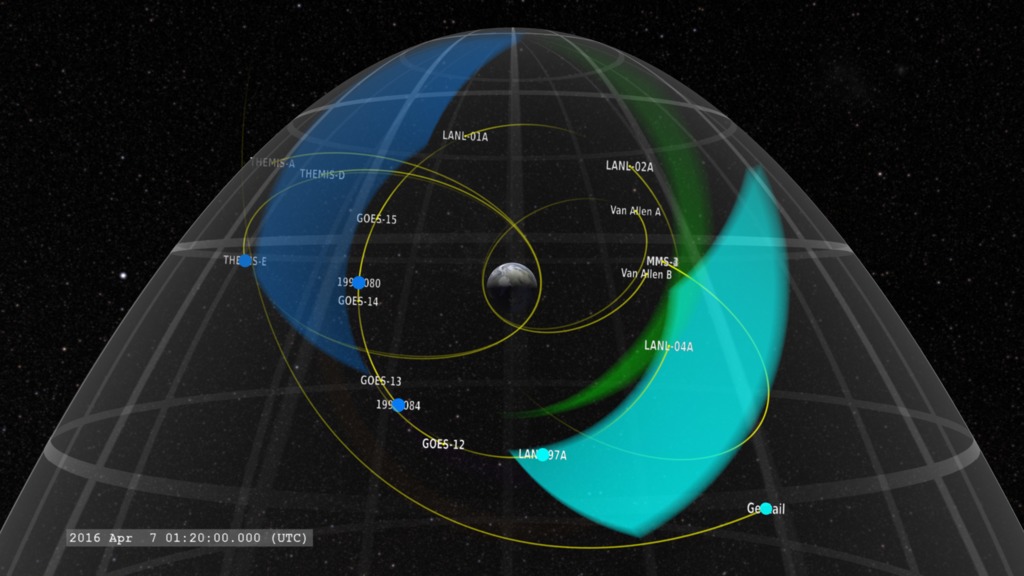Radiation Belts & Plasmapause
Visualization of the radiation belts with confined charged particles (blue & yellow) and plasmapause boundary (blue-green surface)
The near-Earth space enviroment is a complex interaction between Earth's magnetic field, cool plasma moving up from Earth's ionosphere, and hotter plasma coming in from the solar wind. This interactions combine to maintain the radiation belts around Earth.
Plasma interactions can generate sharply delineated regions in these belts. In addition to the inner and outer radiation belts, the cooler plasma of the plasmasphere interacts so that it keeps out the higher-energy electrons from outside its boundary (called the plasmapause).
In this visualization, the radiation belts (rainbow-color) and plasmapause (blue-green surface) surround Earth, its structure largely determined by Earth's dipole magnetic field (represented by cyan curved lines). The radiation belt is sliced open, simultaneously revealing representative confined charged particles spiraling around the magnetic field structure. Yellow particles represent negative-charged electrons, blue particles represent positive-charged ions. However, if realistically scaled for particle mass and energies, the spiral motion would not be visible at this distance so particle masses and size scales are adjusted to make them visible.
The inner blue-green plasmapause boundary is then sliced open to reveal more of the inner structure of the radiation belts, including the innermost belt.

Earth surrounded by plasmapause (blue-green surface) and radiation belts (multi-color).

View as above but now radiation belts sliced open to reveal plasmapause surface, particle trajectories trapped by magnetic field.

View as above, but now plasmapause sliced open to reveal inner radiation belt.

View as above, more particle motion.

View as above, even more particle motion.
For More Information
See NASA.gov
Credits
Please give credit for this item to:
NASA's Scientific Visualization Studio
-
Animator
- Tom Bridgman (Global Science and Technology, Inc.)
-
Producer
- Genna Duberstein (USRA)
-
Scientists
- Shrikanth G. Kanekal (NASA/GSFC)
- David G. Sibeck (NASA/GSFC)
-
Project support
- Laurence Schuler (ADNET Systems, Inc.)
- Ian Jones (ADNET Systems, Inc.)
Release date
This page was originally published on Wednesday, November 26, 2014.
This page was last updated on Sunday, January 5, 2025 at 10:41 PM EST.
Datasets used
-
ECT [Van Allen Probes: Energetic Particle, Composition, and Thermal Plasma Suite]
ID: 828 -
ParticleSimulator
ID: 846
Note: While we identify the data sets used on this page, we do not store any further details, nor the data sets themselves on our site.

